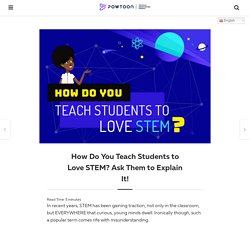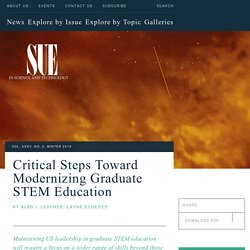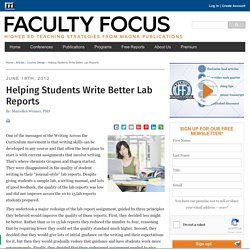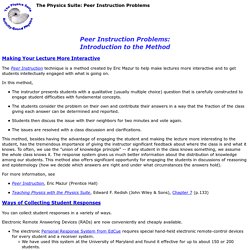

STEAM STEM. How Do You Teach Students to Love STEM? Read Time: 5 minutes In recent years, STEM has been gaining traction, not only in the classroom, but EVERYWHERE that curious, young minds dwell.

Ironically though, such a popular term comes rife with misunderstanding. If you ask any teacher or instructor what STEM means, you’ll often hear answers that reflect “the importance of science in EDU,” rather than the nature of STEM itself. Students, on the other hand, offer the literal meaning of the term (an acronym expanded), “S is for science, T is for technology, E is for engineering, and M is for math.”
Neither response was good enough for Trina. Say Hello to Trina Coleman! Trina is a doctor of theoretical nuclear physics, founder of Coleman Comprehensive Solutions (a partnership that maximizes educational resources), host of Beyond the Classroom (an HBCUI radio broadcast) — and implementor of the Academic Blue Blood STEM Camp. Tackling the Meaning of STEM Trina’s Plan From Plan to Reality: STEM Camp at the Y.H. What does STEM mean? Howdy! Critical Steps Toward Modernizing Graduate STEM Education. By Alan I.

Leshner, Layne Scherer Maintaining US leadership in graduate STEM education will require a focus on a wider range of skills beyond those needed for academic research. The US system for graduate education in science and engineering is widely regarded as the best—or at least among the best—in the world, as evidenced in part by the many thousands of students from other countries who come to the United States each year for their graduate training. At the same time, there is wide recognition that in many institutions the US model of graduate education has failed to stay current with trends in the way science is conducted and with the nature of the student population and their career interests and opportunities. Why has there been so much inertia in the system, and what needs to be done and by whom to help make the graduate STEM education system move forward? An ideal graduate program Local control makes systemic change difficult Academic incentives are critical. Issues in Science and Technology.
STEM Apps. Teaching Mathematics. Science Videos. Defined STEM. Welcome to Successful STEM Education. StratoStar STEM Education Blog - Unlocking Student Curiosity. Helping Students Write Better Lab Reports. One of the messages of the Writing Across the Curriculum movement is that writing skills can be developed in any course and that often the best place to start is with current assignments that involve writing.

That’s where chemists Gragson and Hagen started. They were disappointed in the quality of student writing in their “journal-style” lab reports. Despite giving students a sample lab, a writing manual, and lots of good feedback, the quality of the lab reports was low and did not improve across the 10 to 15 lab reports students prepared.
They undertook a major redesign of the lab report assignment, guided by three principles they believed would improve the quality of those reports. First, they decided less might be better. For the first experiment, each student wrote an abstract and a materials and methods section according to the formal journal-style lab report protocols. In preparing the group reports for experiments 2–4, students prepared one report for each group. Peer Instruction: Ten years of experience and results by Crouch and Mazur. The Peer Instruction Method. Peer Instruction Problems:Introduction to the Method Making Your Lecture More Interactive The Peer Instruction technique is a method created by Eric Mazur to help make lectures more interactive and to get students intellectually engaged with what is going on.

In this method, The instructor presents students with a qualitative (usually multiple choice) question that is carefully constructed to engage student difficulties with fundamental concepts. Eric Mazur shows interactive teaching. Eric Mazur on new interactive teaching techniques. In 1990, after seven years of teaching at Harvard, Eric Mazur, now Balkanski professor of physics and applied physics, was delivering clear, polished lectures and demonstrations and getting high student evaluations for his introductory Physics 11 course, populated mainly by premed and engineering students who were successfully solving complicated problems.

Then he discovered that his success as a teacher “was a complete illusion, a house of cards.” The epiphany came via an article in the American Journal of Physics by Arizona State professor David Hestenes. He had devised a very simple test, couched in everyday language, to check students’ understanding of one of the most fundamental concepts of physics—force—and had administered it to thousands of undergraduates in the southwestern United States.
Mazur tried the test on his own students. Some soul-searching followed. Serendipity provided the breakthrough he needed. “Here’s what happened,” he continues. “It’s not easy. Pedagogy in Action. The Ultimate STEM Guide for Kids: 239 Cool Sites. Maplesoft and University of Waterloo launch online mathematical courseware. Instructables - How to make anything.